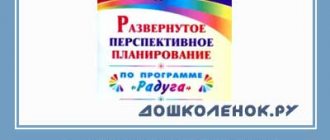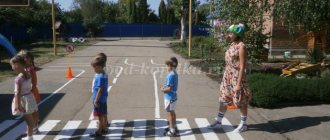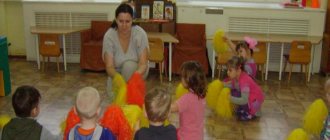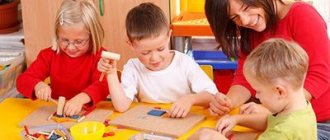Goals and objectives of independent work
What is the main difference between independent work and other types of work at the university?
This is an activity during which the student completes the task independently, without the direct participation of the teacher.
Additional features of this type of work often include the following:
- presence of a problematic problem that requires a solution;
- limited time to complete the work;
- mental effort in the process of finding a solution;
- conscious and independent approach of the student, activity.
It is these prerequisites that determine the main goals and objectives that independent work should solve.
There is an opinion that only that knowledge that a person has passed through himself and supported by independent activity becomes real skills and abilities.
Goals of independent work
Most often, the teacher sets the goals for students’ independent work. Depending on the subject being studied and the level of complexity, they may vary, but the main ones, as a rule, are the following:
- strengthen and systematize the knowledge acquired during the learning process;
- develop the ability to effectively work with scientific literature and other sources of information;
- independently extract knowledge and apply it in practice;
- develop critical thinking, analytical and research abilities;
- develop the skill of planning and organizing time;
- develop self-control and performance evaluation skills.
The ability to set goals and objectives, highlighting the main thing - a useful skill
Example: goals for independent work of students in the direction of “Diplomatic and Consular Law” of the specialty “Jurisprudence”:
- systematization and strengthening of students’ knowledge acquired during the study;
- formation of skills to use, apply, interpret regulations, analyze theoretical sources;
- formation of independent thinking, abilities for self-improvement and self-realization;
- development of research skills.
The determination of the content and main goals of students’ independent work is influenced by the requirements of the Federal State Educational Standard, curricula and programs of specific disciplines approved by the higher education institution.
Tasks of students’ independent work
If goals are the main, global vision, then tasks are specific steps to achieve them. They are determined by the logic of learning and help to break down the execution process into stages. What problems can independent work solve:
- repeat the material covered;
- deepen and assimilate new knowledge;
- consolidate theoretical information;
- summarize and systematize what has been learned;
- develop practical skills and professional abilities;
- apply knowledge in practice;
- solve specific tasks or cases.
Example: tasks of independent work of students in the direction of “Diplomatic and Consular Law” of the specialty “Jurisprudence”:
- master theoretical (fundamental) knowledge of diplomatic and consular law;
- learn basic concepts;
- study and analyze international treaties, customs and national legislation on diplomatic and consular law;
- solve problems and assignments proposed in the educational manual for practical and seminar classes;
- to form experience of your own search, creative, research activities.
By the way! Our readers now have a 10% discount on any type of work.
The concept of “independent” activity and its functions
Independent activity of a preschooler in learning: analysis of various approaches. The structure of a child’s independent activity Read more: Play as a means of teaching independence
2.2 The concept of “independent” activity and its functions
Analysis of monographic works devoted to the problem of organizing independent activities of preschool children, P.I. Pidkasisty, I.A. Zimneya, showed that the concept of independent activity is interpreted ambiguously:
Independent activity is work that is performed without the direct participation of the teacher, but according to his instructions, at a time specially provided for this, while the child consciously strives to achieve the goal, using their efforts and expressing in one form or another the result of mental or physical (or both) actions. Independent activity, in our opinion, is most fully defined by A.I. Winter. By its definition, independent activity is presented as goal-oriented, internally motivated, structured by the object itself in the totality of actions performed and corrected by it according to the process and result of the activity. Its implementation requires a fairly high level of self-awareness, reflectivity, self-discipline, personal responsibility, and gives the child satisfaction as a process of self-improvement and self-knowledge. [19,124]
Firstly, this definition takes into account the psychological determinants of a preschooler’s independent activity: self-regulation, self-activation, self-organization, self-control, etc.
Let’s try to more accurately define what is essentially included in the concept of “independent activity.”
“Independence” is a very multifaceted and psychologically complex phenomenon; it is rather a meaning-forming, qualitative characteristic of any sphere of activity and personality, which has its own specific criteria. Independence – as a characteristic of a preschooler’s activity in a specific situation, is a constantly demonstrated ability to achieve the goal of an activity without outside help.
“Amateur activity” is a subjective, strictly individual self-governed activity, with personally determined components: goal, leading need, motivation and methods of implementation.
“Self-activation” is a subjectively correlated internal motivation for activity.
“Self-organization” is the ability of an individual to mobilize himself, purposefully, actively use all his capabilities to achieve intermediate and final goals, rationally using time, energy, and means.
“Self-regulation” is initially a psychological support for activity, which in subsequent development acquires a personal meaning, i.e. actual mental content.
“Self-control” is a necessary component of the activity itself, which carries out its implementation at the personal level.
Secondly, attention is focused on the fact that independent work is connected with the work of a preschooler in a group and is a consequence of the correct organization of educational and cognitive activity in the process of education.
A.I. Zimnyaya emphasizes that the independent activity of a preschooler is a consequence of his correctly organized educational activity in the process of education, which motivates its independent expansion, deepening and continuation in his free time. For the teacher, this means a clear awareness of not only his plan of action, but also its conscious formation in preschoolers as some scheme for mastering a subject or action in the course of solving new problems. But in general, this is the parallel existing employment of a preschooler according to a chosen program for mastering any material during the learning process.
Thirdly, independent activity is considered as the highest type of educational and cognitive activity, requiring from the child a sufficiently high level of self-awareness, reflexivity, self-discipline, responsibility, and giving him satisfaction as a process of self-improvement and self-awareness. [22.86]
The effectiveness of the educational process and cognition is determined by the quality of teaching and independent cognitive activity. These two concepts are very closely related, but independent work should be highlighted as a leading and activating form of education due to a number of circumstances.
Firstly, knowledge, skills, abilities, habits, beliefs, and spirituality cannot be transferred from teacher to child in the same way as material objects are transferred. Each child masters them through independent cognitive work: listening, understanding oral information, analyzing and comprehending the material, analysis.
Secondly, the process of cognition aimed at identifying the essence and content of what is being studied is subject to strict laws that determine the sequence of cognition: acquaintance, perception, processing, awareness, acceptance. Violation of the sequence leads to superficial, inaccurate, shallow, fragile knowledge, which practically cannot be realized.
Thirdly, if a person lives in a state of highest intellectual tension, then he certainly changes and is formed as a person of high culture.
It is independent work that develops a high culture of mental work, which presupposes not only technology, but above all the mind, the need for independent activity, the desire to delve into the essence of the issue, to go into the depths of yet unsolved problems.
In the process of such work, the individual abilities of preschoolers, their inclinations and interests are most fully revealed, which contribute to the development of the ability to analyze facts and phenomena, teach independent thinking, which leads to creative development and the creation of their own opinions, their views, ideas, their position. [17.95]
From everything that has been said previously, it is clear that independent activity is the highest work of cognitive activity of a preschooler and is a component of an integral pedagogical process, therefore it has such functions as educational, educational, and developmental.
Chapter 3. Play activity of a preschooler as a means of developing independence
Independent activity of a preschooler in learning: analysis of various approaches. The structure of a child’s independent activity Read more: Play as a means of teaching independence
Information about the work “Formation of independence in preschoolers”
Section: Pedagogy Number of characters with spaces: 59230 Number of tables: 0 Number of images: 0
Similar works
Formation of the will of preschoolers
61188
0
0
... N.A. Bernstein, L.K. Anokhin, successfully reinforces and supports this point of view from the side of natural science. 2. Development of individual volitional properties An important place in the formation of the will of preschoolers is also given to the development of such qualities as volition, self-awareness, and motivational activity. Let's take a closer look at these phenomena. Development of voluntariness It is believed that everything...
Formation of elementary mathematical concepts in preschoolers 6-7 years old
212928
0
0
...to new conditions. It is necessary to help the child see how important it is to be able to count, measure, and determine the shape of objects. In the process of forming elementary mathematical concepts, it is important to awaken preschoolers’ interest in mathematical knowledge. This will be the key to successful learning of mathematics at school. Distribution of program material by quarter. In the first quarter, it stands out for...
Formation of a positive attitude towards work in preschoolers in joint activities with adults
11616
1
0
... what is happening and, at the same time, in children with higher rates of development, creative abilities are not inhibited, but are successfully developing. The formation of a positive attitude towards work in children is possible only in conditions that ensure their systematic inclusion in activities. Since children are kept in an orphanage around the clock, this allows us to increase the frequency of their inclusion in...
Pedagogical conditions for the intellectual development of older preschoolers in the process of forming mathematical concepts
131247
4
8
... views. It is high-class teachers who are able to bring into play the reserves of the main educational age - preschool. 1.4. Pedagogical conditions for the intellectual development of a senior preschooler in the process of forming primary mathematical concepts Academician A.V. Zaporozhets wrote that the optimal pedagogical conditions for realizing the potential capabilities of a small child are ...
Types of independent work
Types of independent work may differ depending on the location, as well as the nature of the tasks. Classroom and extracurricular activities are distinguished by location. But there are much more types of independent work by the nature of the tasks and they pursue different educational goals:
- preliminary study of the material;
- listening to lectures, finalizing notes;
- working with recommended sources of information;
- performing special tasks within the framework of the curriculum;
- preparation for tests, tests, seminars;
- preparation of abstracts, essays, their defense;
- preparation of reports and scientific research for presentation at conferences and seminars;
- analysis of scientific research and monographs on the subject.
Most of these types of independent work are mandatory. And additional tasks with an asterisk for the smartest are reports, research, analysis of scientific papers and presentations at conferences.
Levels of independent work
Look at examples of work and make sure that we will help you conscientiously!
“The execution of an automatic act does not give our mind any task. No difficulty means no need, and therefore no consciousness.”
This quote from Lev Semyonovich Vygotsky perfectly explains why it is important to take into account not only the types, but also the levels of tasks for students’ independent work.
Conventionally, all types of tasks are divided into three levels:
- reproductive;
- productive;
- creative.
To cope with a task of any complexity, you must remember to rest on time.
Reproductive level
These are tasks whose main goal and objectives are to consolidate existing knowledge. This includes reading various literary sources, adding and studying notes, and completing tasks similar to those that the student already knows how to solve.
Productive level
This is direct work with new material. The main goal and tasks facing tasks at the productive level are deepening knowledge, consolidating skills in practice. Types of tasks at this level:
- draw up an outline of the book;
- compile a bibliography;
- make diagrams, diagrams;
- prepare oral and written responses to questions;
- evaluate the written work of fellow students.
Creative level
The goals and objectives of independent work at a creative level are to independently seek knowledge, demonstrate independent thinking and the ability to analyze, as well as work with large and complex material. Objectives of this level:
- prepare an abstract;
- write an essay;
- conduct research;
- collect material and write a thesis;
- prepare and defend a report.
When choosing the level of tasks for independent work, remember that it should increase each time. This will strengthen self-confidence and increase professionalism.
Need to write an independent paper? Find out how to prepare for it quickly and successfully and by what criteria it will be assessed.
And if you need help preparing and writing any type of work, please contact our student service. Experts will cope with any topic, reveal it taking into account goals and objectives, and also take into account the type and level of complexity.
Principles, types and levels of independent work
In addition to goals and objectives, independent work has principles, types and forms, as well as different levels of complexity. Understanding them allows you to understand the methodological basis on which the goals and objectives of independent work are built, assess the level of complexity of tasks and track your own progress.
Principles of independent work
The following basic methodological principles of independent work are identified:
- focus;
- consistency;
- regularity;
- consistency;
- utility;
- scientific character.
This means that the goals and objectives of independent work, which the teacher pre-vocalizes and the student clarifies during the work, must comply with these principles.
planning in the preparatory group
PLANNING EDUCATIONAL WORK for the week (10/11/2021-10/15/2021)
Group: 2nd preparatory group “Semitsvetiki”
Topic: “I am a man.”
Tasks
: 1. To develop in children positive self-esteem, self-confidence, awareness of the growth of their achievements, self-esteem, self-control and responsibility for their actions and deeds; 2. Form an idea of yourself as a person – representatives of life on Earth.
Final event
: “What did Pepsi-Cola and Water argue about?”
Date of the final event
: Friday 15.10.
Responsible for the final event: teachers, parents.
| Day of the week | Mode | Integration of educational areas | Joint activities of adults and children, taking into account the integration of educational areas | Organization of a developmental environment for children’s independent activities (activity centers, all group rooms) | Interaction with parents/social partners | ||
| Group, subgroup | Individual | Educational activities in special moments | |||||
| 1 | 2 | 3 | 4 | 5 | 6 | 7 | 8 |
| Monday | Morning | social-com. development; cognitive development; speech development; artistic and aesthetic development; physical development. | Complex of morning exercises “Fun exercises”. Develop children's dance and play creativity. D/ games “Valeology or a healthy baby”, “Collect a human figure”, “Guess by touch” “Amazing face” C: Formation of initial ideas about health and a healthy lifestyle. | “Columbus Egg” Consolidate knowledge of geometric figures, develop the ability to carry out visual and mental analysis of their location, | D/s: “Katya has a cold.” Goal: to teach children to turn away when sneezing and coughing and cover their mouth with a handkerchief. | Coloring pages "Children" Goal: development of graphomotor skills. exhibition of toothbrushes and toothpastes personal hygiene items for educational dolls | Talk with parents about the well-being of their children. Individual conversations and consultations at the request of parents. |
| Direct educational activities | Cognitive development of FEMP | Lesson 7. Program content. Continue learning to form the number 6 from ones. (I.A. Ponomareva FEMP, p. 31) | |||||
| Physical training | Lesson 15. Tasks. Exercise children in running and overcoming obstacles; develop dexterity in exercises with the ball; repeat the task while jumping. (L.I. Penzulaeva Physical education in kindergarten, p. 22) | ||||||
| Hood/est development drawing | “Dad (mom) walks with his child in the park (down the street)” P.S. Strengthen the ability to draw a human figure, convey the relative size of a child and an adult. (T.S. Komarova Fine Arts in kindergarten, p. 45) | ||||||



